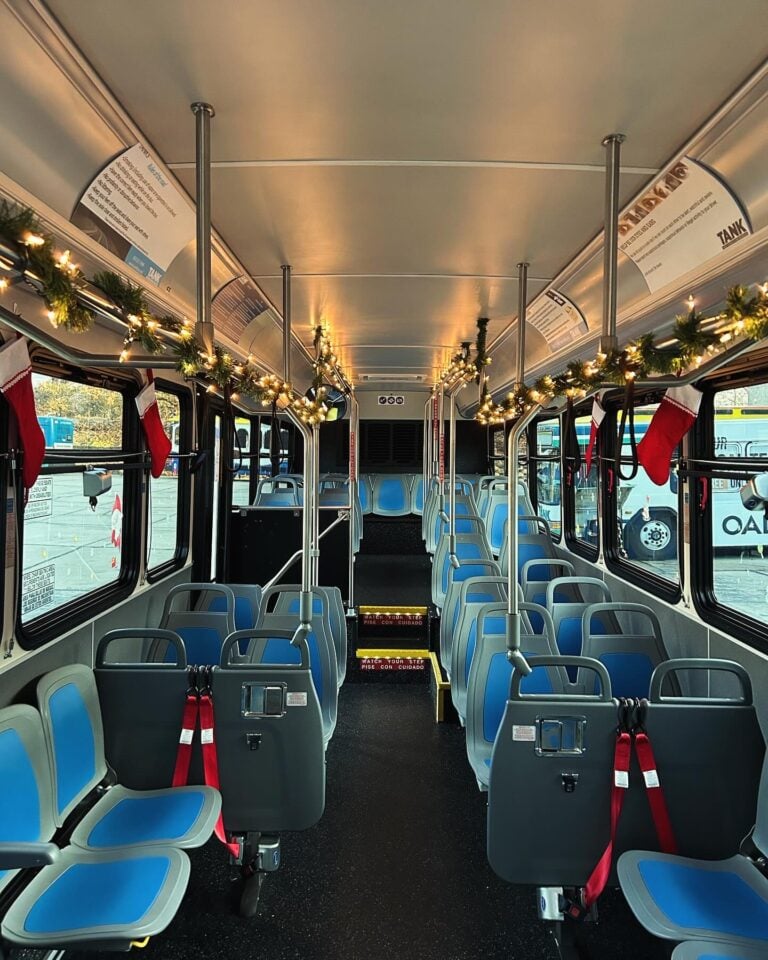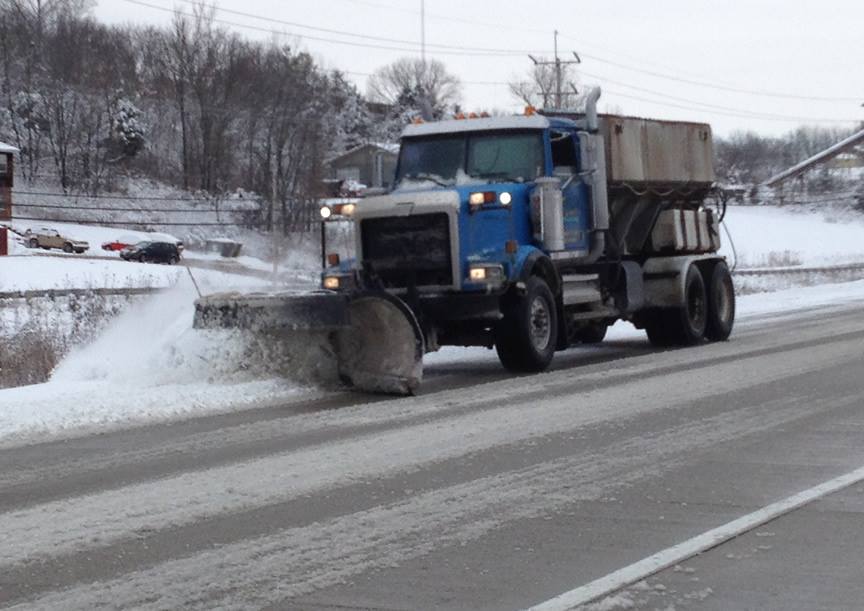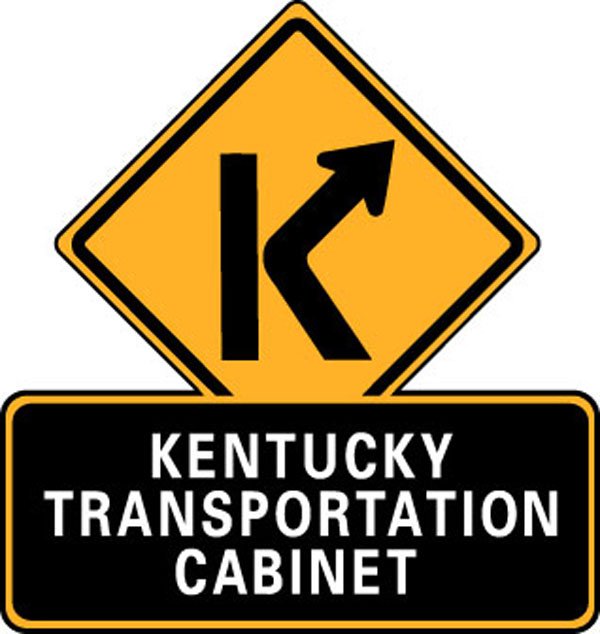The region will experience unseasonably warm temperatures this week, but the Kentucky Transportation cabinet wants to remind motorists that winter is on its way.
District 6 crews had their annual snow and ice meetings in October to check equipment and go over procedures for the upcoming winter season.
This readies them for the challenges that may come their way between November and March.

Crews are responsible for treating and clearing 4,670 lane miles of interstates and state highways in the northern Kentucky area that include the counties of Boone, Bracken, Campbell, Carroll, Gallatin, Grant, Harrison, Kenton, Owen, Pendleton and Robertson. Crews are on duty 24/7 when there is a major weather event.
“The safety of Kentucky’s roadways is the focal point of our maintenance program this time of year,” Transportation Cabinet Secretary Mike Hancock said. “Our snow and ice teams are on the job even before winter weather hits. I’m proud of their professionalism and dedication to service.”
In the Northern Kentucky counties of Boone, Kenton and Campbell, District 6 is responsible for 1,871 lane miles of roadway.
Crews have stockpiled 15,500 tons of salt and over 26,000 gallons of brine for de-icing in the three counties. Sixty-nine trucks are available for snow and ice removal – three of which will concentrate solely on the “Cut in the Hill,” the six mile section of I-75 between Buttermilk Pike and the Brent Spence Bridge.
Every snow storm is different and presents different challenges such as temperature, pavement temperature, timing of snowfall and ice. Last year District 6 crews used over 44,604 tons of salt, approximately 73,480 gallons of salt brine and 48,325 gallons of liquid chloride for snow and ice. In all, District 6 spent $7.7 million on equipment, materials and labor.
To view the priority route map for Boone, Kenton and Campbell Counties go to click here .

Drivers can learn from information gathered by highway safety analysts. “There are things we can do to increase the likelihood that we will be crash-free drivers,” said Wood. “They fall into two categories: vehicle hazards and road hazards.”
VEHICLE HAZARDS
· High speed. Loss of control occurs much easier at high speeds.
· Window fog. When it is raining, the windshield and other windows may quickly fog up, blocking your vision. On cold mornings, you may find a thin layer of ice on your windows. Window defoggers can eliminate the problem. Turn them on before you enter the roadway.
· Balding and improperly inflated tires. Over time, tires lose their tread in a process known as balding. Aggressive driving and alignment problems can speed up the balding process. The tread is what allows the tire to grip the road. If your vehicle lacks adequate tread, you have a greater risk of hydroplaning on wet or icy surfaces. Tires should have a tread of at least 1/16 of an inch. Anything less and it is time to replace it. A trick to see if your tires have enough tread is to stick a Lincoln penny into the tread, with Lincoln’s head pressed into the groove. If the top of Lincoln’s head is visible, there is not enough tread. Tires that are improperly inflated are at risk of blowing out should the car go into a skid.
“Each winter season we ask people to partner with us to make our roads crash-free,” Nancy Wood, the district’s information officer said. “During winter storm events, our maintenance workers do their part to fight adverse road conditions; we need you to do yours.”
“Each winter season we ask people to partner with us to make our roads crash-free. During winter storm events, our maintenance workers do their part to fight adverse road conditions; we need you to do yours.” Nancy Wood, KYTC District 6 information officer.
· Braking power/Stopping distances. The average stopping distance on a dry road, assuming two-thirds of a second reaction time, at just 30 miles an hour is 75 feet. On a wet road, the stopping distance is 120 feet. At 60 miles an hour, on a dry road, the average stopping distance is 240 feet. On a wet road, same conditions, the stopping distance is 420 feet. When a road is wet, the average stopping distance for a five-passenger car is twice what it is on a dry road. Coupled with poor visibility, which can lengthen the time it takes you to react, the stopping distances may be even larger. Because of this, you should position yourself twice as far away from the vehicle in front of you.
· Water build-up on brakes. After driving through a puddle, brake rotors can become coated with water, which affects their ability to safely slow the car. To prevent this, you should lightly tap your brakes after each puddle to remove excess water.
· Windshield wipers. The most important factor that affects driver visibility in the rain is windshield wipers. Older wipers tend to become cracked and brittle, lasting only six months to a year in areas with frequent rain. However, wipers do not last forever even if they do not get much use. They can become brittle and warped by the sun, rendering them useless in heavy rain or snow. There are several indicators that wipers need to be replaced: windshield streaking, smearing, rubber that flakes off when touched, wiper screeching, and frayed wipers.
“The District 6 highway engineers and maintenance workers will continue to do everything they can to keep our roadways safe, but the bottom line is that each driver is responsible for his own safety when he gets behind the wheel,” Wood said. “Even with all the safety measures we put into place, we have not yet invented a way to driver-proof a road.”
· Engine oil and grease buildup on pavement. Over time, grease and engine oil build up on road surfaces. When roads are dry, this is not a problem. However, when rain or snow start to fall, oil and grease come to the surface and rise above the water coating the road. This makes wet conditions even more dangerous. Although the oil and grease are washed away after a few hours of rain, those first few hours are critical.
· Crowned roads. Most roads are crowned, or built so the center of the road is slightly higher than the sides. The purpose of crowning is to allow rain to run off the pavement. However, any sort of debris or barrier along the shoulders traps water and prevents natural runoff. This creates puddles which can lead to hydroplaning and spray that can obstruct your view, and this is why District 6 maintenance crews spend so much time cleaning ditch lines.
· Groundwater and runoff. Temperatures can drop rapidly, especially during early morning hours. Any water standing on the pavement or running across a roadway can freeze into a thin sheet of ice that is nearly impossible to detect in advance. Puddles may splash water onto the windshield and obscure your vision. Another danger of puddles is hydroplaning, when the tires lose contact with the road and instead ride on a pocket of water. This makes the vehicle hard to control as it loses traction with the road and affects steering, braking, or accelerating.
Changing conditions. Weather conditions can vary even with small changes in elevation. Most often, air temperatures fall and rain changes to snow as you climb in elevation. However, a common meteorological condition called an inversion can result in the exact opposite. In our mountainous region, drivers should be prepared for rapid changes in road conditions.
Wood said driving in bad weather is not as simple as it seems.
“Even the most quick-witted, experienced driver should realize he or she cannot drive on wet or icy roads at normal speeds,” Wood said. “It is a hard lesson to learn if you wait until you slide into a guardrail or, worse, an oncoming vehicle, before you realize that all the safety messages you’ve been exposed to over the years were important. Paying attention and slowing down can mean the difference between a safe arrival and not getting there at all (and) this is especially so during winter months when cold temperatures create ice on the roads even in the absence of a storm.”
Updates are available by following KYTC District 6 on Facebook here or on our Twitter here.
KYTC District 6























